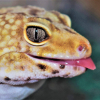Caught 6-27-2017
Queen 1
11mm
Dug out of freshly dug chamber about 3 inches down
Open lot in town mowed grass and weeds
Ant is all black except red head
I've never seen an ant like this around here before


Queen 2
6mm
Caught in mid air with hand during mating swarm
Open lot in town mowed grass and weeds
Ant is completely jet black
From what I can tell I'm thinking this one is Tetramorium.




















